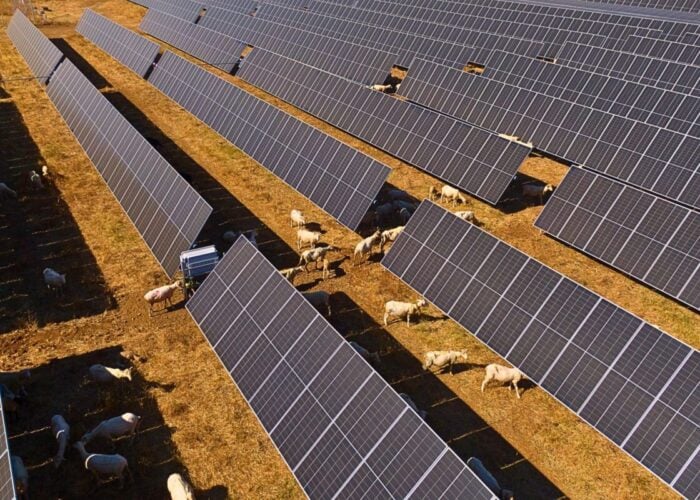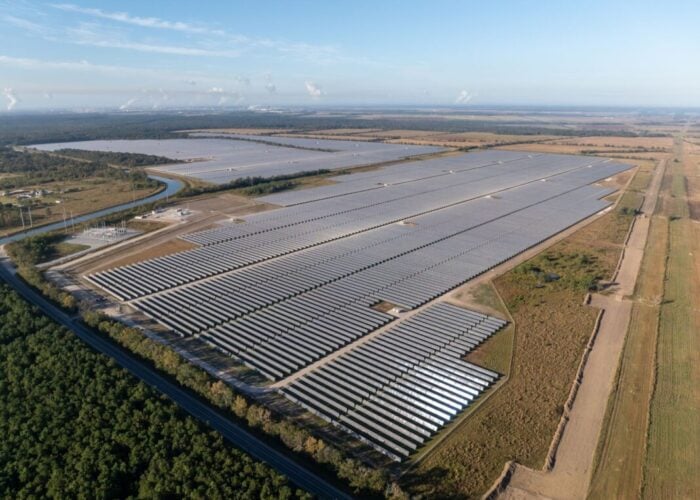
With operational solar assets in certain markets advancing in years, the question about when and under what circumstances to repower them is becoming increasingly common. Alice Grundy looks at the key drivers behind repowering PV.
Repowering of solar assets may be a somewhat distant prospect for some markets, however an increasing number of asset owners are assessing their options.
Unlock unlimited access for 12 whole months of distinctive global analysis
Photovoltaics International is now included.
- Regular insight and analysis of the industry’s biggest developments
- In-depth interviews with the industry’s leading figures
- Unlimited digital access to the PV Tech Power journal catalogue
- Unlimited digital access to the Photovoltaics International journal catalogue
- Access to more than 1,000 technical papers
- Discounts on Solar Media’s portfolio of events, in-person and virtual
There are a variety of reasons repowering may be up for consideration, with life extension being one of these. An asset experiencing a significant amount of down time due to equipment that is faulty or degraded is another situation where repowering becomes an attractive example, although this is more likely to occur in older assets. Being able to replace obsolete equipment, in the instance of manufacturers going out of business in the years following a PV plant being built, can also make repowering an attractive undertaking.
Massimiliano Tarantino, head of wind and solar repowering and refurbishment at Enel Green Power, told PV Tech that obsolete components can result in less energy production and less revenues, meaning an asset owner must economically evaluate when it’s the right moment to invest in new components i.e. PV modules or inverters, rather than carrying on operating the asset with a maintenance strategy.
“The decision to repower a renewable facility is an investment decision like any other based on economic analysis, with the difference being that we are in front of an asset that can continue to generate cash flows,” he said.
Repowering presents an opportunity to modernise portfolios with the newest technology available, for instance with some new inverters offering greater levels of understanding of how both the inverters and overall site are performing, while repowering can also allow asset owners to take advantage of newer modules hitting the market, with some new modules now featuring outputs of 650Wp and greater, boasting at least three times as much power output as the corresponding technology of eight years ago.
As such, repowering can also reduce the physical footprint of a site while retaining the same capacity, which can free up space to build a new, potentially subsidy-free section of the plant. While these benefits make repowering well worth considering, it isn’t without its drawbacks, and it isn’t right for any asset of any age. Older assets that do experience issues with downtime are clearly best suited to repowering, while the financial impact of repowering is something that must be carefully considered.
Natasha Kumar, managing director of BayWa r.e. Operation Services in the UK, told PV Tech: “Only if the numbers stack up will our clients be looking to sign off on the investment, because it is a significant investment.”
Some asset owners may also find it more beneficial to repower with older modules to avoid a complete rebuilding of their plants, as the solar market is beginning to shift towards the production of large-format modules with higher rated power, while the production of smaller panels is decreasing correspondingly.
“This certainly represents a complication for the implementation of repowering plans involving the replacement of the old modules only. Indeed, the retrofit of modern larger panels on old plants poses a challenge in terms of their suitability for the existing infrastructure,” saidSimone Mandica, team lead at UK-based asset manager WiseEnergy.
Extending the lifespan of an asset through repowering also brings up the complexity ofthe lease agreement, which – if present – provides a precise date for the decommissioning of the existing plant and therefore needs renegotiating.
The popularity of repowering also varies from market to market, being more established in the likes of Germany and Italy compared to the UK, for instance. This is largely due to the maturity of the markets, with more PV at an older age in Germany and Italy. In the UK, conversely, a significant portion of PV in the country is under 10 years old, and as such is likely to perform for the next 15 – 20 years without running into too many issues.
Alongside this, in Germany the focus is often on long term asset ownership, making repowering a more attractive undertaking, while Italy’s high feed-in tariff, from which old plants benefit, as well as the relatively low cost of PV equipment, makes it a particularly attractive repowering market.
Repowering is beginning to take hold in the UK, however, with BayWa r.e. repowering solar PV assets owned by Gresham House while WiseEnergy has been working on the replacement of inverters for a portfolio of 10 plants totalling 67MWp.
Overall, with the ability to extend the lifespan of a plant, improve revenue and take advantage of newer technologies, it’s no wonder repowering is beginning to become more common. While many assets are years off needing to be repowered, keeping up to speed with the benefits and processes can ensure asset owners are well placed when the time does come around. And as assets across the globe age, it’s reasonable to expect the repowering market to only grow.
A feature in the upcoming edition of PV Tech Power, volume 29, will delve into the subject of repowering solar assets. To subscribe to PV Tech Power, or indeed PV Tech Premium, click here.







